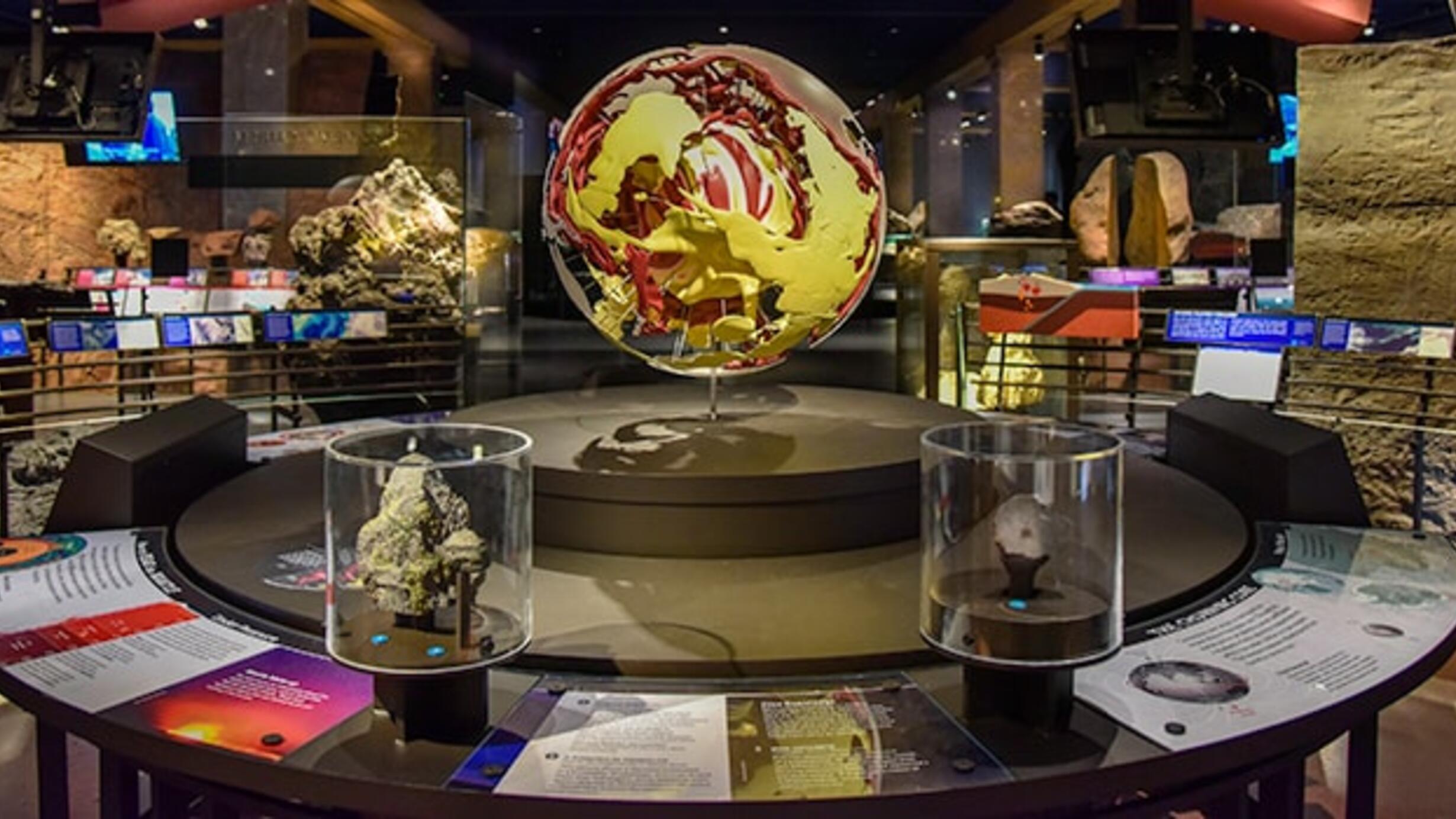How to read the mantle
Part of Hall of Planet Earth.
 AMNH/D. Finnin
AMNH/D. Finnin The globe in the center shows present-day mantle convection based on studies of how tectonic plates have moved over the last 200 million years. These motions reveal where the mantle is rising and sinking. This snapshot agrees with data from the seismic, or shock, waves generated by earthquakes and explosions traveling through Earth.
The Churning Core
Convection also occurs in the liquid iron-nickel alloy of the outer core. The swirling metal carries an electric current and creates a magnetic field called the magnetosphere, which has poles similar to a bar magnet. The magnetosphere shield Earth from harmful cosmic rays.
Seismic wave data from earthquakes and explosions reveal the same basic structure of inner Earth as the one seen in the globe displayed in the center.
Minerals in mantle rocks change structures at different depths, becoming more compact and dense as pressure increases. Scientists conduct experiments at high pressures to see how minerals transform into different minerals of the same element with increasing depth.
Mantle Make-up
Our main source for information about the mantle is basaltic lavas, such as those that feed the Hawaiian Islands. These lavas represent magma that was formed by partial melting of the mantle.
Periodically, Earth's magnetic poles flip. The magnetic north pole move to the geographic south, while magnetic south moves north. These flips happen irregularly, typically over spans of tens of thousands to hundreds of thousands of years.
AMNH/D. Finnin
AMNH/D. Finnin
AMNH/D. Finnin
In This Section
Exhibit
Mantle xenolith
Fragments from the upper mantle are sometimes transported to the surface by erupting lava.
Exhibit
Diamond in Kimberlite
Kimberlite is a relatively rare type of lava. It comes from depths as great as 300 to 350 kilometers.
Exhibit
Iron meteorite
This iron meteorite was once the core of a planetesimal.